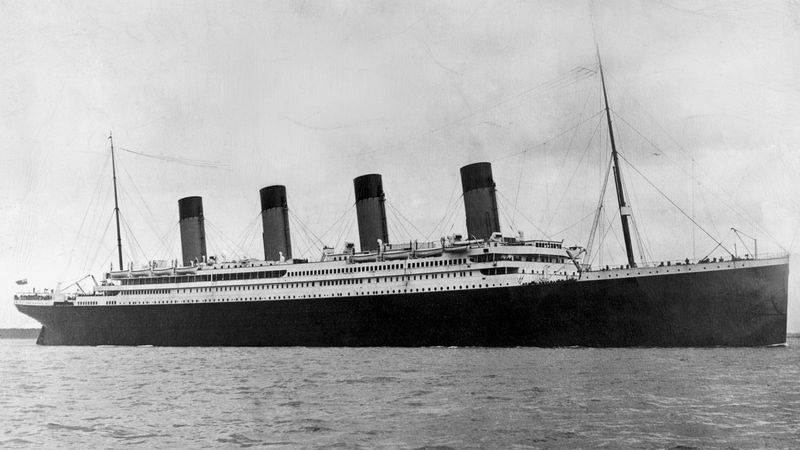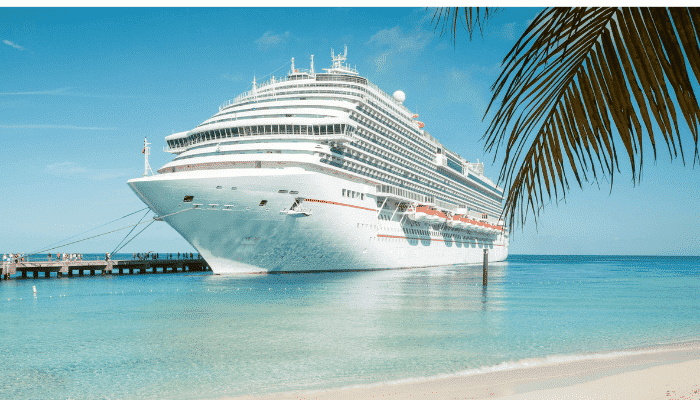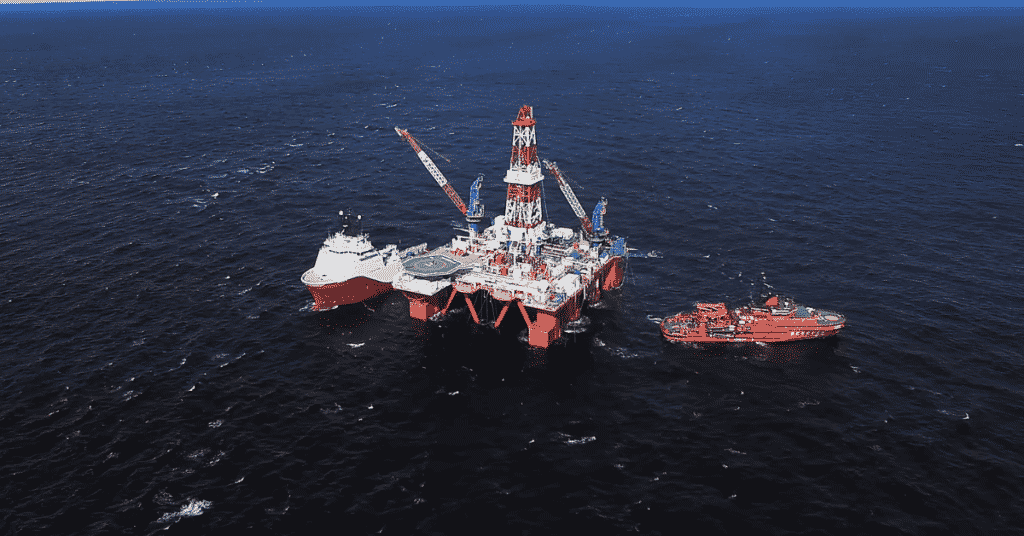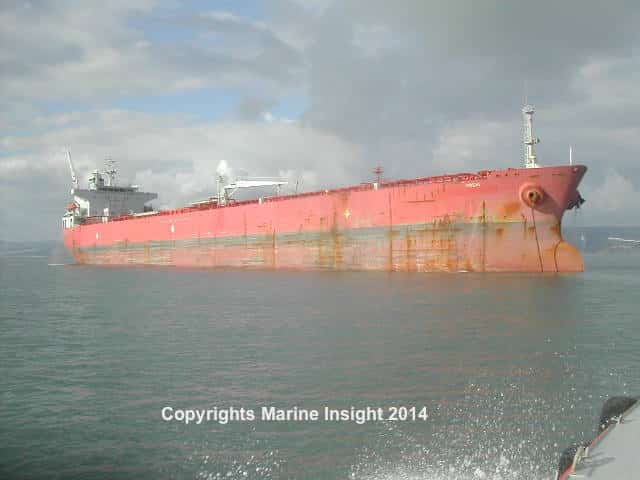Titanic vs Modern Cruise Ship: How Ships Have Evolved
The landscape of cruise ships has evolved dramatically since its inception in the year 1900. However, the most significant event in history leading to modern cruises is the undoing of the Titanic.
A study of Titanic compared to modern ships shows the evolving safety and better than ever standards. Prinzessin Victoria Luise holds the feat of being the first passenger cruise, with 4,409 MT GT. Meanwhile, the first and only incomplete voyage of the Titanic dates back to 1912.
Titanic is the first and the biggest of its time, with 46,328 Gross Metric Tons. Pair this with the ability to carry 2,453 people, and Titanic stands as the highest of its era.
Unfortunately, however, records are the only good memories of a ship that still gives nightmares to the shipping world.

With lessons of high importance as recent as Costa Concordia’s capsizing in 2005, the changes are continuous. Additionally, SOLAS, MARPOL, and STCW have a more prominent role than ever in the main picture.
Today we introduce you to the evolution of cruise ships, considering several points- the structural, design, capacity, entertainment, and safety changes.
All these factors highlight the difference between the titanic vs the modern cruise ship business.
Structural Changes
Titanic’s streamlined design is a mark of naval architecture well beyond its time. More than 14,000 skilled people hold the distinction of working together on assembling the Titanic.
At its peak, the project’s total assembly time took 14 months. However, the technology restrictions and lack of simulation are significant reasons for the final failure. Hence, many changes to the structure and construction of cruise ships have evolved come through these passing decades.
Welds vs Rivets
The most significant difference between the Titanic vs modern ship designing is the holding together of the hull. The Titanic’s design details using over 3 million rivets for its hull and upper deck structure.
However, these rivets highlight three times the allowable slag content for a safe design. Under the impact of a heavy collision, such rivets start a domino effect. It makes an entire section of the hull collapse all together at once and uncontrollable ingress of water.
Compared to this, modern cruise ships use a submerged arc welding. The welding action takes place in a single run, with more than one seams for extra assurance.
Hence, any damage to a section of the ship limits the area of impact without multiplying. Every inch of these welds undergoes ultrasonic testing before submersion as a mark of quality testing. It also includes testing 30% or more cross joints by the class surveyor before going underway.
Quality of Steel Plates
The steel plates for modern ship constructions are thin plates with high structural strength. Most of these plates have a thickness of 5-140 mm with allowable width of 3,950 mm. The structural steel has a 0.15 to 0.23 percentage share of carbon with optional alloys. The highlight of this steel grade is the negligible or 0 slag quantity for a safe working practice. These also have UTS limits of 520 N/mm2 and Yield strength of 235 N/mm2.
In contrast, the Titanic’s steel grade has a considerable quantity of slag in the build-up. Moreover, the 1 1/2 inches of thick plating did not earn enough strength from the rivets. The compromise in strength at the joints made the overall design strength lower, making it vulnerable.
Design Differences
Titanic has special recognition for being the most significant ship amongst its class. However, the size and design do not stand anywhere compared to modern cruise ships.
Length
The length of the Titanic compared to modern ships falls just below the average standard. While the Titanic’s length stands at 268 meters, the Symphony of Seas stands at 362 meters LOA. The higher stability coming from transverse framing helps in increasing the length. Moreover, the modern ballast and tank handling systems are responsive with the help of automation. Thus, it allows adding further to the length without compromising the ship’s seaworthiness.

Width
The Titanic’s width stands at merely 28 meters, comparing nowhere to the modern designs. In comparison, the Symphony of Seas stands at 65.5 meters in width. Thus, a conservative cruise ship design ranges between 35-42 meters in the present designing trends.
Height
The Titanic’s height (bottom to continuous boat deck) design is 18.3 meters long. Comparing to modern designs, the Symphony of Seas is about 72 meters tall. The height also increases the ability of modern cruises to accommodate more commercial benefits. A higher number of passengers owing to an immense superstructure is the most significant development.
Engines and Propulsion
A triple engine design (2 reciprocating Steam Engines and 1 LP turbine) was the Titanic’s powerhouse. The triple screw design and the three sources gave 50,000 horsepower— the standard speed of ahead movement documents as 22.5 knots with a rotational speed of 78 RPM. The steam for propulsion came through 24 scotch (double-end) and 5 auxiliary boilers (single-end). Hence, 12 hours is the minimum firing time to bring these boilers to 260lbs total steam generation.
Comparing the propulsion of Titanic vs modern cruise ship designs, the difference is vast! The Symphony of Seas uses a combination of 6 engines to achieve its power. This consist of Wärtsilä 16V46D (3 engines) 16-cylinder design and Wärtsilä 12V46D (other 3) 12-cylinder design.
The ship also uses electrical drives for 3 stern thrusters that deliver 20,000kw. It pairs up with 4 thrusters at the bow of the ship, giving 5500kws for manoeuvring. The vessel gives a speed of 22 knots at the consumption of 250 MT of fuel (Diesel Oil)
Steering System
3 telemotors (power source common) held the entire steering system of Titanic. An additional system of Capstan at the C deck with separate manoeuvring was present too. However, the modern steering standards stand pretty differently.
The development of 100% redundancy and system duplication is the most significant breakthrough. With this, the designers ensure that ships do not lose power steering even after a complete power failure. Also, the independent design of emergency and auxiliary steering helps the cause too.
Evolution of Cruise Ship Safety Standards
Titanic still happens to be the most prominent building block in the start of safety awareness for global shipping. After the sinking in 1912, the growth graph of safety is steady and precise. The immediate effect of the disaster was the rise of SOLAS (Safety of Life at Sea) in the year 1914. The safety standards of Titanic compared to modern ships show individual discretion of the building yards. Meanwhile, the SOLAS and STCW together eliminate this uncertainty for smooth and safe seas.
Lifeboat and Life Rafts Capacity
The most extensive unsafe practice from the Titanic’s downfall is the lifeboat design and capacity. The plans show only 20 lifeboats, each with a capacity of 65 passengers in an emergency. Hence, 1300 passengers at max are the boarding capacity, with all the lifeboats in water. With the evolution of SOLAS, this blunder’s correction highlights the safety recognition. As a result, a total of 125% of the maximum capacity of passengers is now compulsory for passenger ships.
It also includes at least 50% of the passenger number in the closed-type lifeboats. The act ensures every passenger to have a guarantee of seating inside a lifeboat in case of an emergency. Additionally, life rafts and other similar items make the capacity even higher. Each side (port and starboard) needs to have 50% lifeboat carrying capacity with two or more launching means.
Training and Certification
The regulation of training under STCW helps in the improvement of working standards. Modern cruise vessels employ professionals at every rank only with the minimum STCW qualifications. It means every person has sufficient training for basic emergencies like a fire, collision, and medical cases. The STCW 2010 also controls updating the crew’s knowledge with refresher courses. These modules make sure that each staff is aware of the industry’s safety standards.
Structural Safety
SOLAS regulates the control of modern cruise ship designs for structural safety standards. It creates a big difference comparing the Titanic vs modern cruise ship for safer designs. Fire retardant bulkheads with different grades (Class A, B, C) are compulsory in the construction. Hence, every space has its fire safety division. For Titanic, such regulations did not exist, giving a free hand to the designers for cost reduction.
Fire fighting systems, both fixed and portable, are necessary to make modern ships sea-worthy. It covers the entire engine room, accommodation, and other areas of the ship. Safety training to passengers for fire response is compulsory when boarding the vessels. The use of collision bulkheads to save the ship’s water tightness is a step forward. It allows ships to enter head-on collisions in an extreme emergency with a “false forward”, saving the damage to the actual hull. The Titanic’s side-on collision is a primary reason for the disaster.
Titanic’s watertight bulkheads show a significant failure cause as they do not have full extension. In modern cruise ship designs, the extension of these to the continuous upper deck is necessary. It saves stability and keeps the vessel floating despite taking in water.

Environmental Standards
Environmental protection stands more critical than ever with the evolution of MARPOL. It means modern cruise ships have continuous monitoring for every emission. From sewage to garbage and emissions, everything is under continuous scrutiny. However, the sailing period of Titanic does not reflect any such strict regulations. Hence, design considerations for a safer and cleaner environment regulate the present cruise shipping business.
Capacity and Living Standards
Modern cruises focus on holding higher capacities of passengers with each passing day. Therefore, it justifies the cost of investment going into these vessels throughout their life span. An average investment of 500 to 700 million dollars is a familiar figure for cruise ships. However, considering the biggest in the world, the Symphony of Seas has an investment of $1.35 Billion behind it. Comparing the titanic vs modern ship investment trends, an inflation-adjusted figure of 250 million dollars comes out.
Total Passengers and Crew
Titanic had a 2,435 capacity of passenger carriage. However, the figure seems to be conservative in comparison to the Symphony’s 6680 maximum limit. Add to this over 2200 crew members who are onboard the Symphony for service and propulsion. However, the Titanic’s total staff count was up to 892 crew members across all disciplines.
Cabin Design
Comparing the cabins of Titanic vs modern cruise ship cabins gives an idea of modern luxury. Most cabins of modern ships include integral washroom facilities. The luxury and premium ranges include bathtub and minibar features too. In comparison, even a part of Titanic’s premium class section shows common washroom facilities. In addition, particular cabins of the latest cruise ships feature theatres and sound systems of the highest order. Most cabins of modern ships feature double occupancy standards. The bookings also come through the view available at the exterior. For the Titanic, occupancy beyond two people was also possible.
Entertainment
The most significant difference between modern cruise vessels from the older ones is commercial outsourcing. Malls, theatres, shopping centres, and other similar features are available throughout the voyage. Onboard pools feature Jacuzzi, surfing simulations, and other similar entertainment sources. On average, the medium-size cruises hold 42 entertainment shows in a day.
The entertainment of Titanic, however, stands the best in its time. Unfortunately, however, the commercial use does not feature anywhere near modern trends. Another development from Titanic compared to modern ships is the use of smaller pleasure boats. High-speed boats, pleasure boats, and fishing boats are sometimes within the inclusive design. It makes for coastal exploring and viewing during the ship’s sailing.
Titanic’s Status in the Modern World
Even after correcting its design and flaws, Titanic will struggle to make it to the modern cruise ship business. A big reason for this is the commercial takeover of the shipping business for customer pleasure. The developments are flowing in rapidly for comfortable and enjoyable voyages.
Moreover, the modern environmental and safety factors discard the Titanic’s design completely. Passenger safety and a greener future dictate the trends for shaping the shipping future. Hence, the flawed legacy of the “once great” Titanic is a timeless lesson for the cruise shipping industry.
You might also like to read:
- 10 Best Titanic Books You Should Read To Know The Real Story
- Titanic Survivors and Some Noteworthy Stories You Must Know
- Get the Real Truth; Reason Behind the Sinking of Titanic
- Watch: Fascinating Engineering Facts of RMS Titanic
- Understanding Design of Ice Class Ships
Disclaimer :
The information on this website is for general purposes only. While efforts are made to ensure accuracy, we make no warranties of any kind regarding completeness, reliability, or suitability. Any reliance you place on such information is at your own risk. We are not liable for any loss or damage arising from the use of this website.
Disclaimer :
The information on this website is for general purposes only. While efforts are made to ensure accuracy, we make no warranties of any kind regarding completeness, reliability, or suitability. Any reliance you place on such information is at your own risk. We are not liable for any loss or damage arising from the use of this website.
Related Articles
⚓️ Enhance Your Knowledge. Prevent Accidents. Stay Safe at Sea.
1. eBooks for Engine Department
Master machinery operations, troubleshooting, and safety procedures with expertly written guides tailored for marine engineers. Prevent costly breakdowns and onboard accidents through practical knowledge.
👉 Explore Engine Department eBooks
2. eBooks for Deck Department
Sharpen your seamanship, navigation, and cargo-handling skills with real-world case studies and practical insights designed for deck officers and cadets.
👉Discover Deck Department eBooks
3. eBooks on Electrical Fundamentals & Issues
Understand marine electrical systems, identify potential faults, and prevent onboard electrical failures with step-by-step explanations from industry experts.
4. Pocket Guides for Quick Reference
Compact, handy, and loaded with essential checklists—perfect for on-the-go reference during operations and emergencies at sea.
5. Combo Packs to Save Big
Access multiple expert eBooks at discounted prices. Ideal for professionals seeking complete safety and operational knowledge across various ship departments.
6. Digital Maritime Courses – Learn at Your Own Pace
Upgrade your competence with Marine Insight Academy’s online courses. Learn from industry professionals anytime, anywhere, and become a safer, smarter seafarer.

About Author
Saurabh Sinha is an active marine engineer, sailing with one of the leading shipping companies across the globe. A keen interest in exploring beautiful destinations across the globe and immortalising them in words motivates him for professional writing ventures. He values connecting with the readers and sharing his personal experiences.
Subscribe To Our Daily Newsletter
By subscribing, you agree to our Privacy Policy and may receive occasional deal communications; you can unsubscribe anytime.





BE THE FIRST TO COMMENT